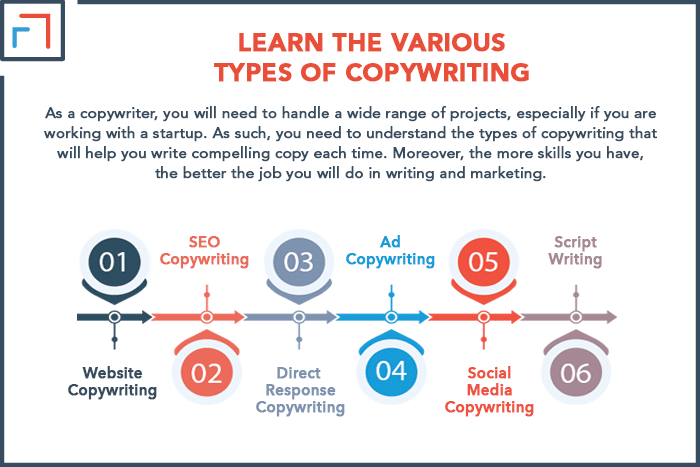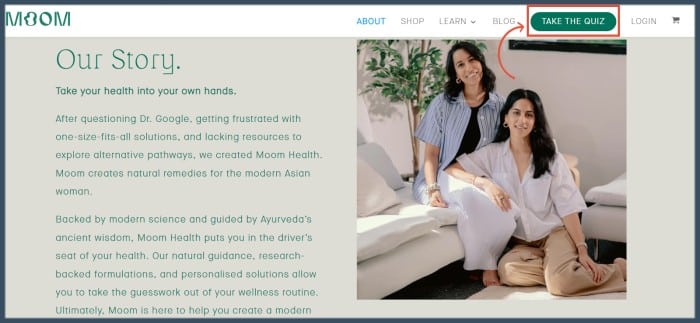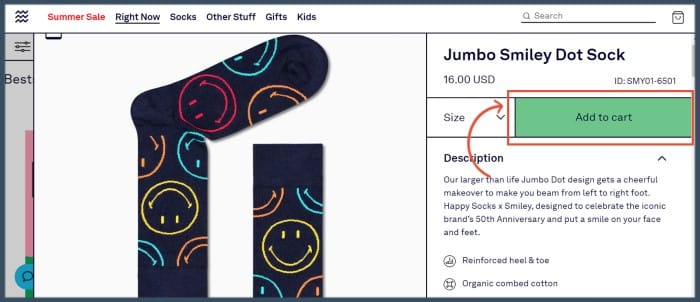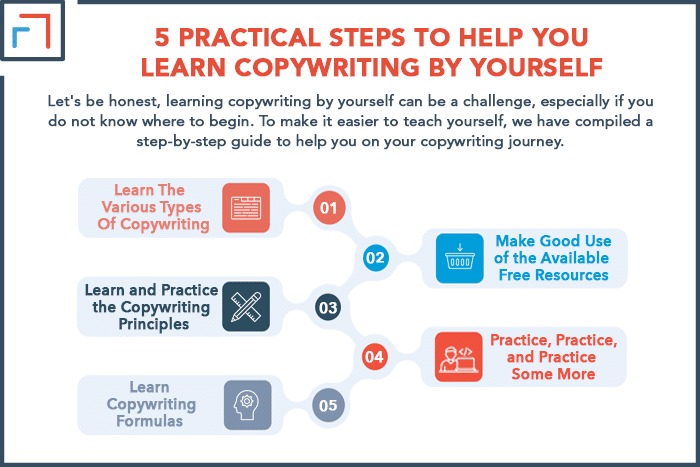One of the biggest misconceptions out there is that you need to acquire formal education for in-demand skills like copywriting. This might have been true during the pre-internet era, but not anymore. If you’re interested in copywriting, you can get started now.
You can teach yourself copywriting, but it takes practice to become an expert. First, you must understand the types of copywriting and its guiding principles and formulas. Next, you will need to properly use free copywriting resources, then practice and track your progress to perfection.
In this post, we will delve into the details of becoming a self-taught copywriter through 5 simple and practical steps. It takes time to perfect this skill, but anyone can learn it!
5 Practical Steps To Help You Learn Copywriting By Yourself
Let’s be honest, learning copywriting by yourself can be a challenge, especially if you do not know where to begin.
To make it easier to teach yourself, we have compiled a step-by-step guide to help you on your copywriting journey.
1. Learn The Various Types Of Copywriting
As a copywriter, you will need to handle a wide range of projects, especially if you are working with a startup.
As such, you need to understand the types of copywriting that will help you write compelling copy each time. Moreover, the more skills you have, the better the job you will do in writing and marketing.
Below are some of the core skills you should learn about.
a. Website Copywriting
This entails writing copy for websites. For example, the copy might include content for landing pages or sales pages. Website visitors will briefly look at a website’s copy before proceeding to the next section.
If the copy is poor, then the visitor leaves. As such, it is crucial to master website copywriting. To ensure web visitors make it to the next step, you must learn to write objectively.
All the sections of a website should end with a call to action. A good CTA will ensure that visitors always know their next step.
b. SEO Copywriting
The aim of SEO copywriting is to create content that ranks higher on search engine result pages (SERPs).
Due to all the competition on the internet, SEO copywriting comes in handy because it can boost visibility for content that would otherwise end up collecting dust.
To master this skill, you must first learn how to research and use the correct keywords. While the process is not easy, the internet has several handy tools to help with that.
Some excellent examples include Ahrefs, Google Keyword Planner, and Semrush. Secondly, study what competitors are doing.
For instance, you could check their page formats, target keywords, and focus topics. Once you understand their SEO strategy, use the insights to improve your SEO copywriting skills.
c. Direct response copywriting
This kind of copywriting requires you to persuade the reader to take immediate action, especially after reading the copy. Subsequently, direct response copywriting must include a strong call to action.
You can also strengthen your copy by adding a sense of urgency, applying a persuasive tone, and using consumer-based language. This audience-centric language will help you tap into their emotions.
d. Ad copywriting
Ad writing is more widespread in digital marketing than ever before. You can use various forms of ads, such as social media ads, YouTube ads, and more.
Although the formats for each piece will be unique, all ads require you to adhere to a word count. Therefore, to craft a conversion-oriented ad, make it attention-grabbing.
You should also communicate the value of the offer as concisely as possible.
e. Social media copywriting
Social media platforms are now used for both business and social interaction. As such, every business needs to have a strong social media presence.
However, since social media is based on entertainment, getting your audience’s attention can be difficult. That is where copywriting comes in.
Learn to craft copy that is engaging and fun to read. Try to find a unique selling point for your brand and lean into it.
f. Scriptwriting
Although some people still write scripts for radios and television, a lot of attention has shifted to YouTube and the creation of podcasts.
The demand for YouTube and podcast scripts makes script writing a skill worth pursuing.

2. Learn and Practice the Copywriting Principles
Once you have selected the skills and topics you need to pursue, all your writing should have one key goal—to persuade the reader to take action. To achieve that, you need to apply the principles below.
a. Understand your target audience, then write for them
Impressive copywriting begins when you understand who your target audience is and what they need. It is easy to fall into the trap of writing copy that you personally think is impressive.
But that is a huge mistake because your audience won’t care about your intelligent copy if it does not help them.
For instance, if you are writing a B2B copy directed at small businesses, it would make no sense to use complicated industry jargon.
It would be better to use simple language that startup owners can understand. Additionally, learn to listen to your audience’s problems, fears, and struggles.
Read about their experiences in forums, blog comments, reviews, and more. If possible, try to incorporate some of the words they use when you write your copy.
b. Ensure your copy is concise, error-free, and clear
The modern reader has a short attention span and no time to read long blocks of text. Subsequently, you have a short window of time to communicate your message and convince your audience to take action.
This principle forces you to keep your text short and to the point, especially when writing ads.
Similarly, ensure there are no grammatical errors because these will make you lose credibility and seem like an inexperienced scammer.
c. Pair product features with their benefits
When writing copy that is intended to promote a product or a service, it is important to show the features and how they address the problems of the user.
If you list several features and no advantages, people will not appreciate the value the product will add to their lives. Similarly, listing many benefits without supportive features is equally dangerous.
It makes the promotion seem like a scam even when it is not. So, the secret is to strike a balance between the features and their benefits.
d. Be specific about your selling point
The main goal of any copy is to boost conversions and rake in more profits. For that reason, you should have a clear understanding of what the business is selling.
To get started, search for the pain points that the product or service addresses. Once you know this, base your copy on the biggest pain point.
In your writing, avoid using generic statements because these make your copy sound like a hard sell. Instead, dive into the specifics of the product details and how it effectively solves the problem.
Even if the details are complicated, work hard to include them. Real information makes your copy more credible.
3. Learn Copywriting Formulas
Learning copywriting formulas will help you to write compelling copy faster and help you stay on track. There are several formulas out there, but we’ll dive into a few tried and true ones.
Once you have a familiar structure to work with, you’ll be able to write much faster.
a. Problem-agitate-solve (PAS)
This formula works like a charm, especially when you are offering a product that offers solutions to a given problem. To use this formula, you should first help your audience identify the problem.
From there, add some salt to the wound. Show them how a problem left unattended may worsen. Then finally, present your remarkable solution. Look at the example of this formula below.

Moom Health’s story is an excellent example of the PAS formula in use. First, they identify the problem as a one-size-fits-all approach.
Next, they agitate the problem by attributing it to a lack of resources. Finally, they offer a solution by providing personalized solutions backed by science.
b. The Four C’s
The Four C’s formula guides you to craft Clear, Concise, Compelling, and Credible copy. Those are the four Cs worth remembering. Let’s take a deeper look at each C.
Clear: Your copy should be easy to read and understandable for everyone. You can achieve clarity by utilizing short sentences, simple words, bullet points, and headers.
Understanding your audience also helps you write with clarity.
Concise: Here, you should be able to communicate your offer in the fewest words possible without losing meaning.
Compelling: The copy should be interesting enough to attract your readers’ attention and get them to read it to the end. The secret here is to write with a laser focus on your audience and their pain points.
Credible: The copy should be trustworthy. Otherwise, readers will be skeptical and hesitate to buy from you. To achieve credibility, you can use customer testimonials, whitepapers, and articles from experts.
The best part about this formula is that it is flexible and can be used for any product or service. Below is an example of a website that uses the Four C’s formula.

The copy here is clear, concise, compelling, and credible. The company shows how powerful the shoe is by clearly stating its features and benefits.
Better yet, the alluring copy doesn’t use any hard sell promotional words.
c. The attention-interest-desire and action formula (AIDA)
Whether you are writing a landing page or social media post copy, this popular copywriting formula is highly applicable. The core goal of AIDA is to attract attention and maintain it until readers take action.
Once you capture the attention of your audience, the next step is to make them so curious that they long to know more about your offer.
Finally, you need to get them to take action. For clarity, let’s take a look at this AIDA example from Happy Socks.

The brand uses a playful tone to describe their socks, hence making you interested enough to keep reading.
The copy starts with a short and catchy one-liner followed by the product name. Finally, the copy describes how the product will benefit the user. Evidently, the copy persuades you to make a purchase.
4. Make Good Use of the Available Free Resources
This is the best bit of teaching yourself copywriting! The internet is packed with tons of free materials that can help you become a successful copywriter.
All you need to do is pick a free resource, learn from it, and implement the knowledge. Below are some examples of relevant sources of inspiration to help you get started.
YouTube: This site is a rich repository of knowledge for several niches, and copywriting is one of them. To get started, simply log onto YouTube and search for copywriting tutorials.
Watch a variety of videos, especially those from successful copywriters. Follow along with their suggestions and watch the quality of your writing improve!
Spotify: Podcasts are taking the world by storm because you can listen to content as you do other things. Spotify is one of the best resources for audio content.
For instance, the Copy School & Australian Writers Centre is an excellent place to start. Once you subscribe to a few copywriting podcasts, more will show up in your recommendation feed.
Copywriting blogs: Websites and blogs that specialize in copywriting are excellent resources for any self-taught copywriters.
Such sites usually have an abundant supply of free guides, checklists, tips, and more. Some of the best copywriting websites include Copyhacker and Copyblogger.
Copywriting courses: A copywriting course will make it easier for you to learn by providing a detailed study plan. It also bundles everything you need to know under one roof.
You can find them by performing a quick Google search. However, bear in mind that the courses are not equal. Some may be more valuable than others.
Copywriting books: Another effective way to teach yourself copywriting is by learning from the best. You can easily do that by reading copywriting books that were written by industry experts.
Examples of such books include Breakthrough Advertising by Eugene Schwartz, Ogilvy on Advertising by David Ogilvy, and Influence by Robert Cialdini.
The good news is that you can usually find these books online as downloadable pdfs.
5. Practice, Practice, and Practice Some More
It’s impossible to overstate the importance of practice when you’re teaching yourself how to write copy.
There is no better way to hone your skills other than practicing them regularly and making constant improvements. After following the steps above, your next step is to write copy each day.
First, write copy for your business (whether you own one or you plan to become a freelancer). Once your copy is ready, look for an experienced copywriter/editor and request a review.
You can also ask friends and family for help, but remember that their experience may be limited. Your core goal for writing those pieces is to collect as much feedback as possible.
The reviews will help you make the necessary adjustments. Over time, you will be able to write quickly and creatively. Finally, keep learning new tricks and hacks to take your copywriting to the next level.

Closing Thoughts
Although a paid copywriting course can provide everything you need to know, this path isn’t for everyone.
Fortunately, you can beat the obstacles in your path and teach yourself copywriting with help from free resources. Our step-by-step guide above will help you develop a study plan and teach yourself.
Now that you know the major copywriting skills, principles, formulas, and resources, you can start the journey and become a great copywriter!
